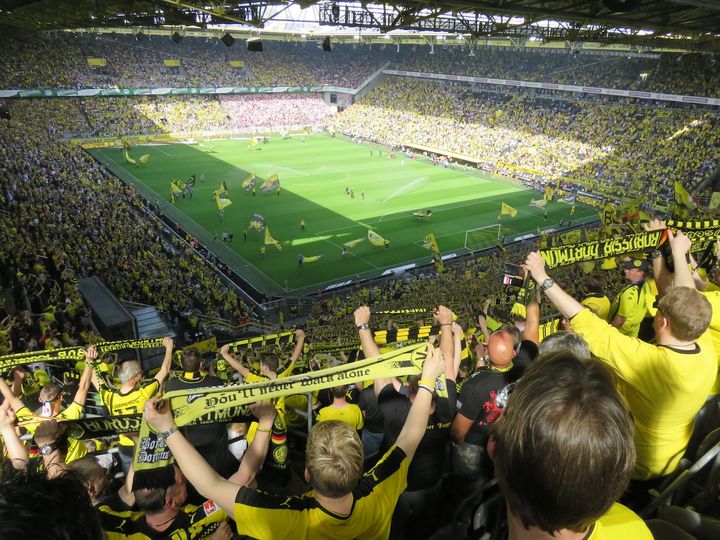Empowering Sports Brands: Building a Purpose-Driven Culture

Businesses across industries are evolving at a pace faster than ever before, with new technology, processes, and AI aiding this change. At the same time, consumer expectations are being shaped by social awareness, and what is happening in their daily lives. The sports industry too cannot elude this reality as fans expect their clubs and teams to play a vital role in supporting social causes and be a flagbearer for positive change.
From the impact of the Covid-19 pandemic to issues of racial injustice and environmental protests, fans are urging sports organizations to make a difference. Studies reveal that fans want their clubs to support youth education and tackle sports-related problems [Nielsen Report]. Additionally, nearly half of all fans consider social and environmental responsibilities before making purchases.
The business case for purpose-led strategies and cultures is compelling, with companies centred around a purpose experiencing top-line growth, enhanced customer loyalty, and increased employee performance [Deloitte].
"Purpose-driven companies witness higher market share gains and grow three times faster on average" -Deloitte Report
However, despite the proven benefits, only a few businesses have successfully embraced a purpose-driven approach. Many struggle with understanding how to develop and communicate their purpose effectively. In this blog, we will address these challenges and explore the transformative power of purpose in the sports industry.
What are Purpose, Missions and Values?
Often, organisations use Purpose, Missions and Values interchangeably and vaguely. To establish yourself as a purpose-driven powerhouse, it is important to align on these terms first, before integrating them into your company's culture.
Purpose is the soul of your organisation and defines your existence. Purpose-driven companies transcend mere profit and work towards creating a more ethical, equal, and sustainable society. Their focus extends beyond immediate stakeholders to positively impact the global community.
Mission functions like a conscience, aiming to benefit direct shareholders and customers by affecting their immediate community positively.
Values lay out the principles guiding employee interactions with customers and partners, ensuring the organization stays on the right path.
While both purpose and mission serve the same roles, it is important to understand that a business cannot be purpose-driven and mission-driven at the same time. In practical terms, they are set up differently from the outset and target different levels of audiences.
FC Barcelona (FCB): More than a Club
FC Barcelona aims to transcend its identity as a football club into something bigger and better. They have actively promoted equality, diversity, and other social causes via their official channels and foundation. Here are a few examples of their purpose-led initiatives:
Mercedes-AMZ Petronas Formula One Team
While being one of the most advanced businesses in the world, very few people see the F1 team as a business striving for positive change in the world. It is a good example of a well run mission-driven company that benefits its fans, employees and shareholders with a strong set of values and ethics. They allow their drivers to take a stand against social issues but are not set up to address it themselves.
They state their mission as aiming to be the 'greatest team in the history of the sport'. Their values reflect the team working together to achieve supreme performance. They benefit their shareholders differently in an innovative, high-performing but respectful culture.
What works for you?
Deciding between a purpose-led or mission-driven approach can be challenging. It is important to seek that clarity early on to avoid confusion and frustrations among your employees and customers.
- Willingness to integrate global scale purpose
- Transparency around practices
- Balancing profit and social good

Challenges of being a purpose-driven organisation
Becoming a purpose-led business may falsely seem like a rosy path, but there are a variety of hurdles you'll need to jump.
Short term results
As a society of short attention spans and instant gratification, proving the value of a purpose-led strategy and culture might be a challenge. Organisations can get frustrated and impatient with the absence of immediate results, tempting you back to old ways and pulling the plug on your commitment to a greater purpose.
Organisational alignment
Even if a few of your employees buy into the whole 'purpose' ideology, long-term success will evade you. Effective communication plays a key role in bridging this gap and rallying more people to your side. Clear, consistent messaging, both internally and externally, will help stakeholders understand the value of purpose and provide a blueprint for implementation.
Balancing financial goals with purpose
At the end of the day, the bottom line of a company decides whether it survives or not. This can be challenging initially when the impact of your purpose-driven strategies is still brewing under the surface. Putting very clear trackers and KPIs early on can help tackle this issue by showing progress over time.
Purpose is no longer a distant goal but a present-day reality. Fans seek to align with sports organisations that genuinely care about society and the planet. Embracing purpose can create a profound connection with audiences and empower employees. By understanding its long-term value, sports organisations can navigate the short-term challenges and become true purpose-driven powerhouses.
Join the Purpose-Driven Movement!
Whether you're a sports organisation, marketing executive, or sports enthusiast, embrace the power of purpose-driven strategies. Discover how purpose can inspire your team and fans or be part of the movement by supporting businesses that make a difference.
Click here to learn more and get involved!

Comments ()